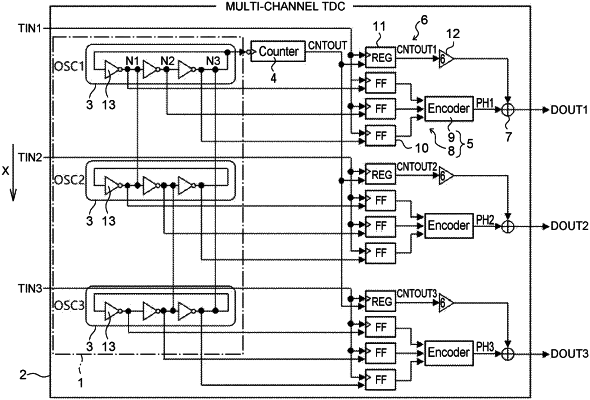| CPC H03K 3/0315 (2013.01) [G04F 10/005 (2013.01)] | 18 Claims |

|
13. A time-to-digital converter comprising:
a plurality of oscillators that output oscillation signals having the same phase and the same frequency;
a counter that measures periodicity of an oscillation signal outputted from any one of the plurality of oscillators;
a plurality of phase detectors that each detect a phase of an oscillation signal outputted from a corresponding oscillator when logic of a plurality of time signals transitions;
a plurality of count holders that hold count values of the counter when logic of the plurality of time signals transitions; and
a digital signal generator that generates a plurality of digital signals corresponding to the plurality of time signals based on the count values held in the plurality of count holder and the phases detected by the plurality of phase detectors,
wherein the plurality of oscillators comprise:
a first oscillator having output nodes of n (n is an integer of 3 or more) stages;
a second oscillator having output nodes of n stages; and
a third oscillator having output nodes of n stages,
an output node at an a-th stage of the first oscillator and an output node at an a-th stage of the second oscillator are connected with each other, where a is an integer of 1 or more and n or less, and
an output node at a b-th stage of the second oscillator and an output node at a b-th stage of the third oscillator are connected with each other, where b is an integer of 1 or more and n or less different from a.
|